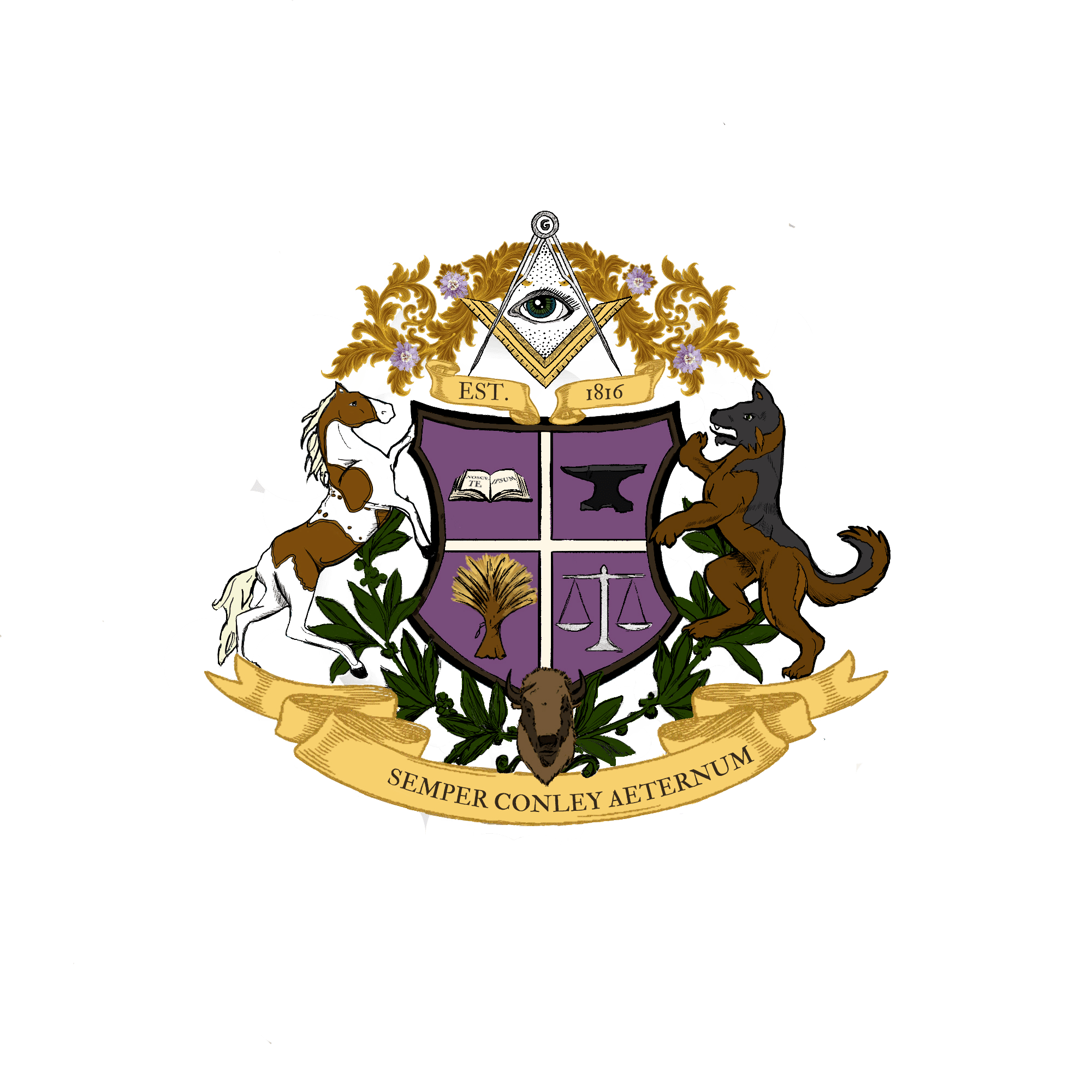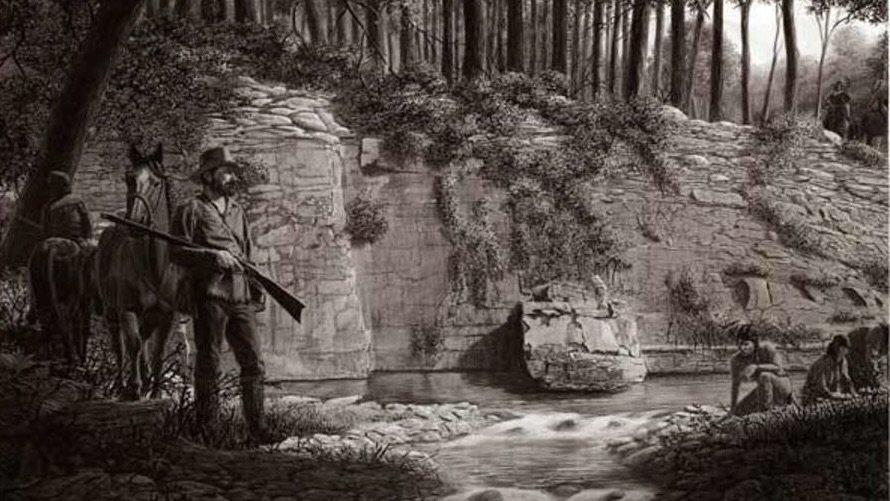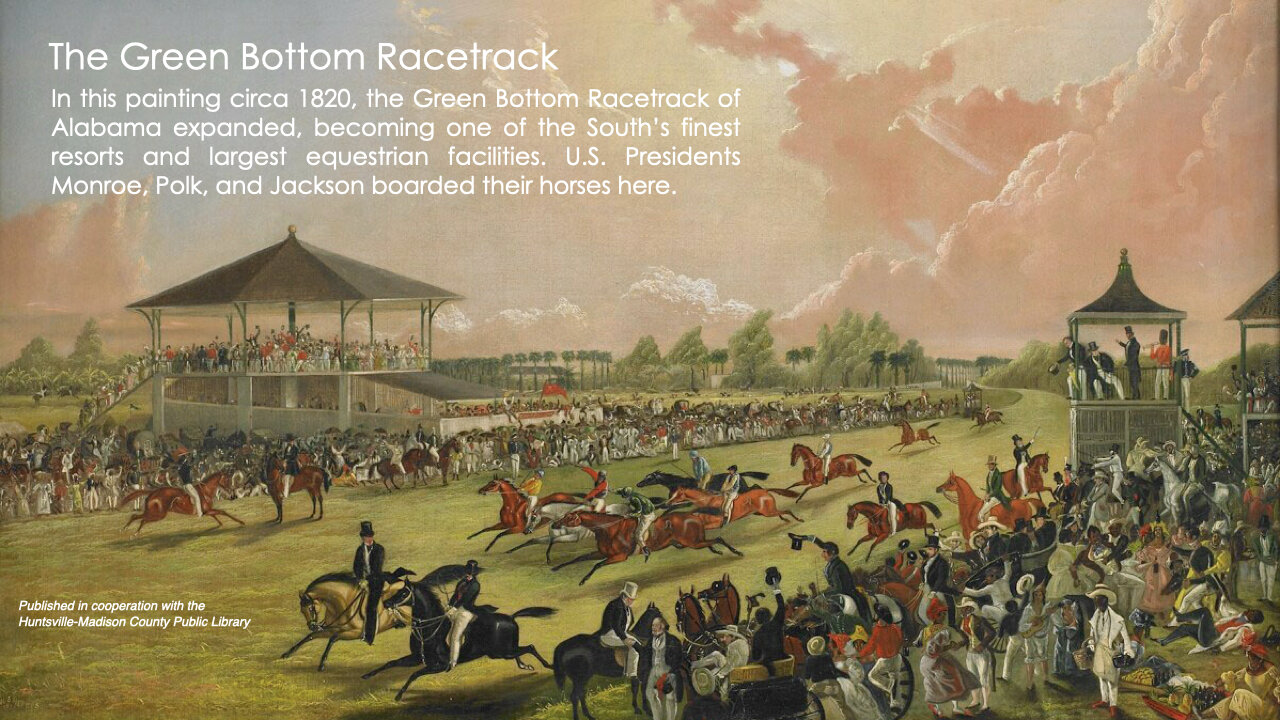The Conley Family is a set of related American families which first achieved prominence in equestrian pursuits and equine business ventures in the earliest years of the United States, before expanding into real estate, agriculture, business, education, theology, military, science, and organized sports.
OBSCURE BEGINNINGS
The aforementioned Connallys carved out existence in the wilderness a century prior to the American Revolution of 1774. Then, a family member showed up in rural Lancaster County Virginia, and it appears his progeny moved in and out of obscurity before moving to Farnham County in the same state, near Richmond. The story seemed to have turned, when a branch of the Conleys/Connallys moved just across the state border to Caswell County, North Carolina.
The most prominent branch began with John Oldham Connally - a landowner and hotelier originally from North Carolina, and whose family came from Virginia. He moved to “Twickenham” in the ‘Georgia Territory’ between 1804 and 1809, and built a minor fortune in trade, hoteling, and horse stabling.
Artistic interpretation of John Hunt’s encounter with Native Americans at Hunt’s Spring, now downtown Huntsville.
Green Bottom circa 1820, in all its glory .
GREEN BOTTOM INN & EQUESTRIAN RESORT
1815-1845
The area of his initial land purchase only became known as Huntsville after the War of 1812 - the unsuccessful attempt by the British to retake the American Colonies. In 1815, Connally began construction of the Green Bottom Inn & Equestrian Sporting Center, which opened with great fanfare. The resort quickly became known as one of the finest in the nation. No less than three early U.S. Presidents Jackson, Monroe, and Polk stabled their sporting horses at the great Green Bottom resort and equestrian center.
According to historian Ira Berlin, “throughout the South, a light skin was the freeman’s distinguishing characteristic,” The original Conley Brothers were in fact, caucasian in appearance, the sons of octoroon James Conley, shown above.
John Oldham Connally’s illegitimate son, James, was born on border of Virginia and North Carolina circa 1800, before the move to Alabama. The name of the slave woman who was the mother remains unknown, a circumstance not uncommon when chattel slavery flourished from the 1560s until the 1860s. Children born of such enslaved women were sold off with little thought.
Young James was initially trained as a coach driver and then stable master (also known as an avener when The South was awash with francophile pretensions and hatred for the British following 1812.) It was his good fortune that he was trained in a liveried profession. Until the end of the Civil War in 1865, only the wealthiest planter class landowners were able to hire personal coach drivers. Often, the wearer of a livery was an indentured servant of the highest class possible, and was given a clothing of a waistcoat, a fustian jacket, silver stockings and fur capes twice per year. Traditionally, they drove the carriages of plantation owners, and were skilled mechanics who could deal with breakdowns, wheel cracks, and other issues with horses and carriages which quite common in that era.
Young James’ training and preparation would be put to the test in June 1819. President Monroe, a supporter of Alabama’s petition for statehood, paid a surprise visit to Huntsville on horse back with several carriages in tow. It was presidential ‘victory tour’ as Spain had been vanquished in the Southeast United States, and a treaty was being edited ceding southern half of current day Alabama and all of Florida to the United States. Young James Conley, only 19 and a newly minted father, would prove his mettle and manage the care of the President’s horses during his historic stay at the famed Green Bottom. The experience and exposure to the President would inform James’ standard of excellence, impacting the family for generations.
Accounts of President James Monroe's Southern tour reveal his preference for entering a town on horseback rather than a carriage. An avid equestrian, he often brought a retinue of racing and jumping horses. James Conley was responsible for the boarding and maintenance of Monroe’s horses during his stay at the Green Bottom Equestrian Center on the President’s historic ‘Tour of the South’ on June 1-2 in 1819.
Photo of painting from University of Mary Washington.
Map of President Monroe’s “Tour of the South” in 1819, courtesy of the Chattanooga Times Free Press. “The tour of the South took the president and his entourage through Virginia, North Carolina, South Carolina, Georgia, Tennessee, Alabama, Kentucky and Indiana. - Chattanooga Times Free Press.
John Oldham Connally’s estate consisting of land, bonds, accounts, 61 slaves, more than 90 horses, by the time of his death in 1845. The fortune accumulated by John Oldham Connally was mired in disputes upon his death in 1845. John’s illegitimate son James, however, was spared the tumult. As the son born out-of-wedlock from a colored female slave, he was not a legal person to the courts dealing with the Connally estate.
Although there was quite a bit of race-mixing in 1845, most of the ‘white’ Connallys moved west after John Oldham’s death, and many of those to Texas, Arkansas, and Missouri. Most of the ‘Colored’ and Mulatto Conleys remained in Huntsville and the Tennessee Valley. Three parcels of that original land owned by John Oldham Connally remain in the Conley family to this day, eight (8) generations later.
AFTER GREEN BOTTOM - A NEW CHAPTER
James did eventually prosper on his own, and he managed to bequeath much of his assets, resources, and social capital to his seven sons: Washington, Felix, Paschal, William, James Jr., John, Hamilton. They formed an effective network, with many trade partners unable to distinguish one brother from the next. Each son was dispatched to build businesses around a different aspect of the former Green Bottom Equestrian Resort, yet they all worked together as a construction company when a new equestrian facility needed to be built north and west of Huntsville.
PRECISION, RELIABILITY, INTEGRITY
James’ service as stable master was the beginning of several family traditions: 1) His knowledge of carriages gave rise to a tradition of carriage drivers, wheelwrights, carriage painters, ironworks, and blacksmiths that endured for generations ; 2) His competence in livery stable management started a legacy in logistics, operations, military quartermasters, accountants, and other professional roles gave rise to traditions concerning supply chains, materials, and quality control. James’ understanding of equestrian sports equipment resulted in successful businesses in ironworks, blacksmithing, and horse tack manufacture; 3) His responsibility for the special needs of aged and retired horses, led to a tradition in breeding and veterinary medicine; 4) Lastly, and mostly importantly, his skill in stable and barn construction led to line of highly-trained stone masons, woodworkers, builders, who would acquire substantial wealth during the westward expansion of America.
As stable master, James maintained the riding schedules of his father's guests and monitored the training and exercising schedules of the horses with a staff of grooms. Detailed documentation related to the pedigree, ownership, and performance of horses has long been a characteristic of the equestrian world. The demands of his role as equerry for the Green Bottom imbued young James Conley with management skills which would distinguish his descendants.
After James Conley, the family would produce six generations of military quartermasters, construction managers, logistics coordinators, trucking professionals, archivists, librarians, engineering project managers, accountants, and financial regulators. The family became known as reliable stewards of processes, procedures, and protocols for many kinds of organizations.
Oscar Conley. Quartermaster, U.S. Army, Korean War. Production Operations General Motors car company
Crystal Mitchell Hamlet, SMSgt, United State Air Force. Nursing Services Superintendent and Supply Chain expert.
Kenneth Raymond MacLeod. Logistics, U.S. Marine Corps. Supply Chain Inspector and Quality Control, Digital Equipment
Gloria Woods, Military Housing Coordinator. Gloria managed the housing for thousands of soldiers and their family with precision.
Anthony Conley, Supply Chain inspector and Quality Control for various automotive companies.
Wilford Bernard Ford. Civil Engineer. Wilford managed construction elements of military forts, garrisons, and facilities.
Harold Jacobs, Accountant and Treasurer. A pillar of stability of Oakwood University and its Alumni Association.
Nikki Conley. Civil Engineer. Nikki D. Conley is the 6th generation of Conley civil engineers, architects, construction managers, masons and builders.
ARTISIANS AND MASONRY
While it is hard to imagine now, the American South was the economic growth engine of the world from 1700 until the 1860 when the Civil War ushered in a new Industrial Age. In the antebellum era between 1800 and 1860 stonemasons, bricklayers, woodworkers, and general carpenters of African or Irish ancestry were in high demand. The few that owned their own operations made small fortunes.
Green Conley and his sons Alexander and Jonas grew prosperous as stone masons using European methodologies as shown above.
Free Coloreds, although small in number, prospered in the Deep South (Alabama, Arkansas, Florida, Georgia, Louisiana, Mississippi, South, Carolina and Texas.) Contrary to popular belief their lives were quite comfortable, as the South grew in wealth from the agricultural economy.
WAR & PEACE
After the Civil War, achievements in military leadership, education, and theology infused the family with meaningful cultural capital. From 1880 forward, the family played a pivotal role in the establishment of many American traditions.
Conleys were by the side of General John J. Pershing in the modernization of the U.S. military beginning with the first true global conflict - the Spanish-American War. Conleys helped established several schools, colleges, and institutions that are now cornerstones of American culture. Conleys were key figures in the development of Methodist, Seventh Day Adventist, and Evangelical Baptist faiths.
The family played a role in bringing Methodism to the Tennessee Valley.
Conleys were by the side of General John J. Pershing in the modernization of the U.S. military beginning with the first true global conflict - the Spanish-American War.
THE BOOM
In the post-War boom of the 1950s, the Conley Family moved aggressively into science. The creation of NASA and the evolution of Huntsville, Alabama from a cotton powerhouse into the capital America’s dominance in space exploration, had a transformative effect on the family. Conleys soon made their way into exciting new arenas in math and science, national security, and computing. From the moment German scientist Werner Von Braun arrived in Huntsville with his team of rocket engineers in 1950 to develop U.S. space program, Conleys were involved in direct and adjacent aspects of the space race.
Notably, Conley women were able to benefit with many pursuing careers in technology, medicine, science, and academia.
Viola Conley Elder. Entrepreneur
Phyllis Vannah MacLeod. Entrepreneur.
Ingra Conley. MBA Engineer. SABRE Airline Software System.
Camisha Chitty, PhD. Economist and Academic
Nina Butler, MD/MBA. Pediatric Medicine.






















